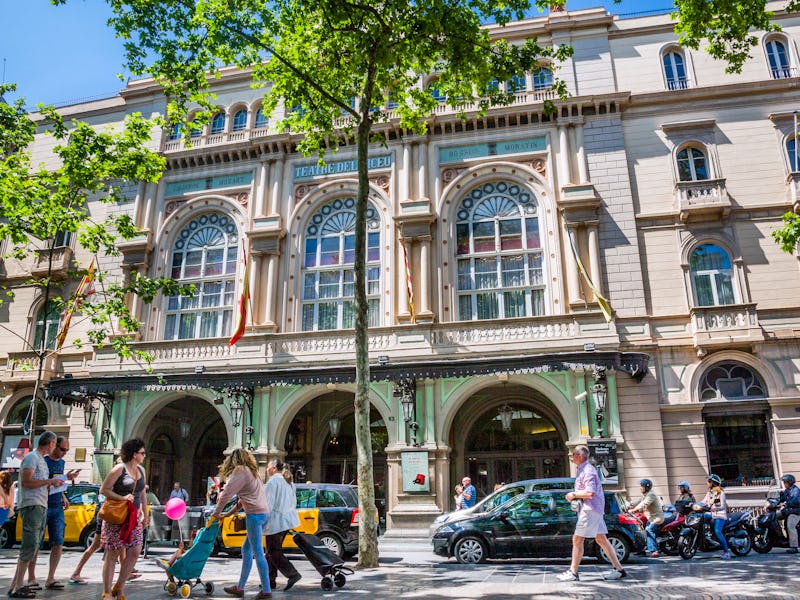Stunning opera house image is reminiscent of retro plant science
Plants among the opera?

Seats overflowed with greenery and lush balconies overlooked a string quartet earlier this week in Barcelona's Gran Teatre del Liceu. For just a few minutes, a string quartet played to an audience of more than 2,000 potted plants.
Images of the special performance, held on June 22, quickly made their way around Twitter. Users described the moment as "fascinating," "beautiful," and "like a plant parent fever dream."
All of those assessments are correct. This is excellent:
The concert was live-streamed "so that people can play it in their homes for their plants to hear," said artist Eugenio Ampudia.
The performance in front of 2,300 plants lasted only about six minutes; the musicians played "Chrysanthemum," by Italian composer Giacomo Puccini. Observing their usual respectful protocol, the musicians bowed to the audience before and after they played, Reuters reports.
Afterward, the plants were donated to frontline health care workers.
You may not have a string quartet on hand, but you can still try this at home, even if you didn't have a chance to livestream the Barcelona concert. The idea of playing music for plants harkens back to the 1960s and 1970s, when house plants were all the rage — not unlike now.
Whether playing music will actually do anything in helping your plants grow is a different story — and one science hasn't quite answered yet.
"Science" of plants and music — The string quartet in Barcelona isn't the first time humans have tried playing music for plants. Some have claimed that music actually helps plants grow.
This idea throws it back to 1960s science. In 1962, botanist T. C. Singh reported that playing classical music for balsam plants helped them grow 20 percent taller and 72 percent larger. He later claimed to have found similar results with raga music, which is played flute, violin, and harmonium.
A separate study in 1973 found that plants were not fans of Led Zeppelin or Jimi Hendrix, and apparently wilted in response.
More recent studies have found some evidence that plants benefit from music, albeit with less extreme results. A 2014 study in the Journal of Integrative Agriculture found that sound waves, at various volumes and distances, can influence plant growth. Researchers reported lettuce, spinach, cotton, rice, and wheat grew more — between 5 and 20 percent — when they "listened" to music.
The science is far from settled, though. Some scientists doubt that plants respond to music at all, though they may detect some sound waves — like the noises made by feeding predators.
But if you want to start playing music for your plant friends at home, there's really no harm. And given the history, there are plenty of plant-specific options.
There's a "music for plants" playlist on Spotify, and another on Soundcloud.
Or, you can kick it old-school.
In 1976, Composer Mort Garson produced a whole album just for plants ("and the people who love them") called "Mother Earth's Plantasia."
You can listen to the full album on YouTube:
Garson's album includes tracks such as Symphony for a Spider Plant, A Mellow Mood for Maidenhair, and Concerto for Philodendron and Pothos.